Corrugated Board Grades Guide

Published date: 18 May 2021
Corrugated board is one of the most popular materials for packaging boxes. It’s sturdy yet easy to cut, bend, fold or drill. Corrugated boards come in a range of strengths, thicknesses, materials, and performance capacities and serve different purposes depending on what you buy. This guide will teach you everything you need to know about corrugated board to ensure you find the correct cardboard for the job, whatever that may be.
Material composition: What is corrugated board?
Corrugated board is a type of cardboard with a distinct composition. Each sheet of corrugated cardboard has three components: one sheet of corrugated (i.e. ‘ridged’ or ‘crimped’) material glued between two layers of paper, also known as the outer and inner liners. This inner corrugated layer adds rigidity, strength and stability.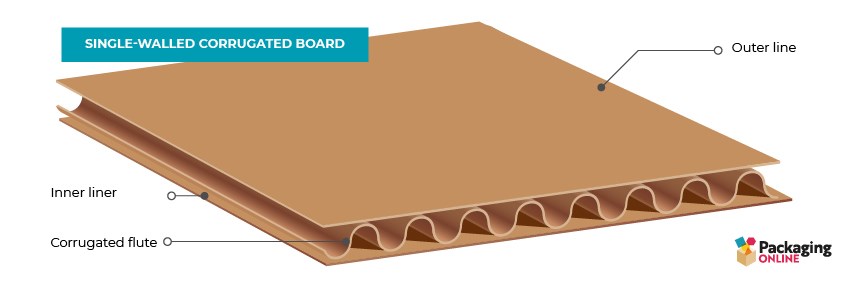
Paper Types: What are the components of corrugated board made of?
Different paper types can be used to form the layers of corrugated board. The paper type used has an impact on the board’s performance.
All three outer, inner and corrugated liners are most commonly made of either Kraft or Test paper.
Kraft Paper
Test Paper
Other Paper Options and Grades
Paper Weights: How is paper weighed, and what is GSM?
Paper is weighed in GSM: grams per square meter.
Common paper weights used for corrugated board are:
• 115/125 GSM
• 140/150 GSM
• 185/200 GSM
• 300 GSM
Often, you will see the cardboard weight referred to followed by the paper grade. For example, 125gsm Kraft paper is simply referred to as 125K.
Wall Types: How are different corrugated boards constructed?
There are different ways of constructing corrugated board. Multiple layers of liner and corrugation can be added, resulting in additional rigidity and strength.
Single-Walled Board
As mentioned in the first section, a single wall (or flute) of corrugated board is composed of the below:

Double Walled Board
Adding an extra flute — i.e. another corrugated sheet and flat paper liner — to the single-walled board creates a double-wall, adding extra sturdiness, as shown below:
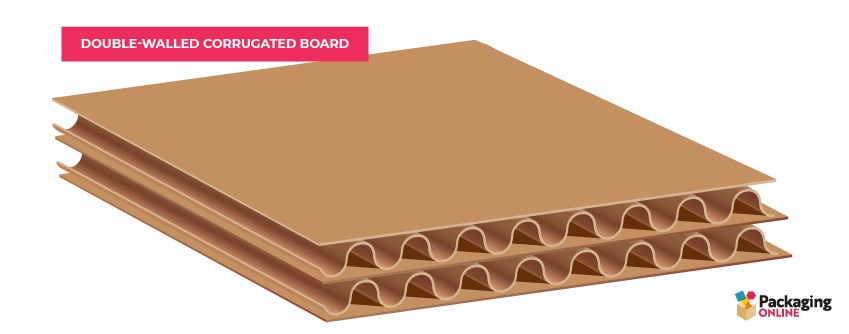
Triple Walled Board
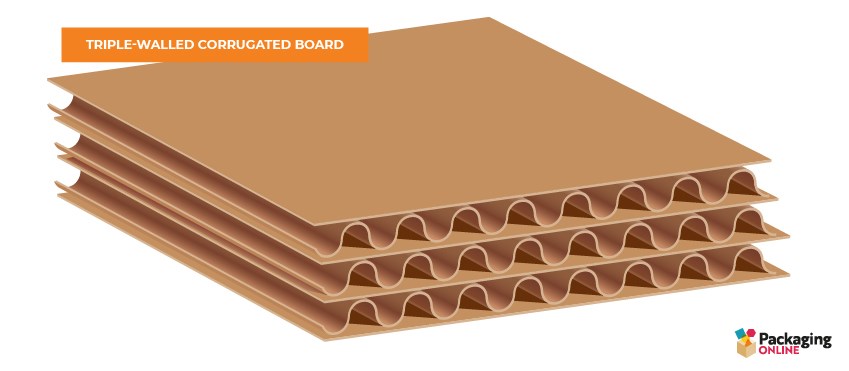
Flutes: What different flute options are there?
Flute Materials
Flute Weight
• 90 GSM WBF
• 105 GSM WBF – Most common flute standard
• 112 SC and WBF
• 150 SC and WBF
• 175 SC and F
Flute Sizes
• A FLUTE – 5mm
• B FLUTE: 2.5 - 3mm — versatile all-rounder for all types of packaging.
• C FLUTE: 3-4mm — more compressed than a B flute, so better for stacking lightweight products.
• E FLUTE: 1-1.5mm — very fine, perfect for printing and small cartons.
• F FLUTE: 2mm
Flute Size Combinations
Common flute size combinations are:
• BC FLUTE: Double wall of 5.5-7mm in total combining B and C flutes — good all-round performance for items needing a higher level of transit protection with only basic print.
• EB FLUTE: Double Wall of 4-4.5mm in total combining E and B flutes — utilising a fine and large flute offers transit protection in combination with a good surface for print.
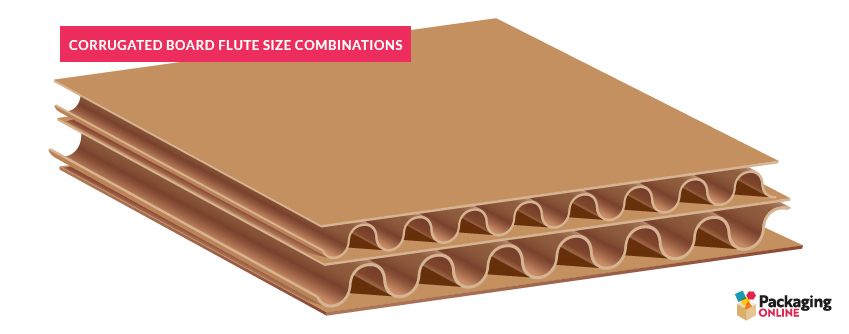
Board Grade Names: How is corrugated board named and graded based upon the above?
Corrugated board is named based upon all the information in the guide above. The format used is as follows:
Outer Liner Weight and Material / Fluting Grade / Inner Liner Weight and Material
For example, if your outer liner is 125gsm Kraft paper, your flute is grade B, and your inner liner is 125gsm Test paper, your corrugated board overall grade name is:
125K/B/125T
Corrugated Board Grade Recommendations: What corrugated board grade should you use for your goods?
Ultimately it is down to you to decide what corrugated board you use to transport your goods, but the table below can help as a general guide:
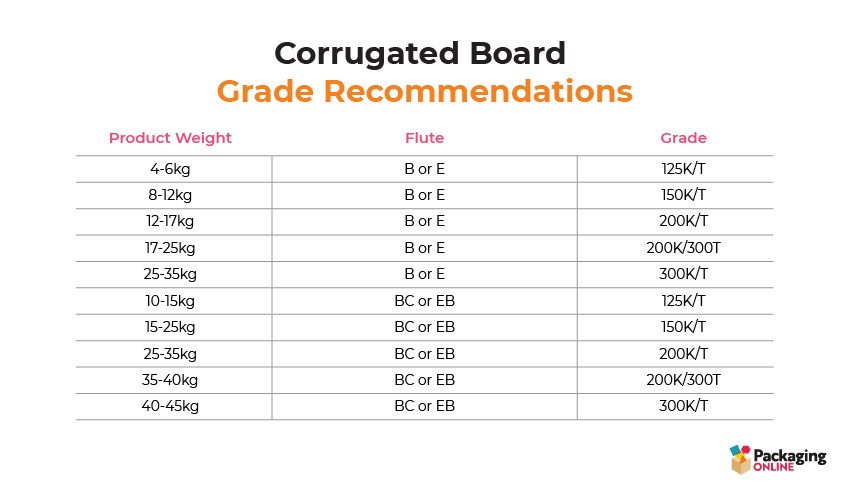
Corrugated Board Glossary
Across Flute - A unit of measurement to measure corrugated boards. This is the measurement of the width of the flute.
Backing Liner - A compressible material adhered to the liner to improve finish, water-resistance and strength.
Blank - A flat piece of corrugated board that has been cut and scored, ready to make a box.
Carton Board - Board with a medium to high compression and moisture resistance. Unlike cardboard, it is solid, and not fluted.
Clay Coat - A thin layer of kaolin (soft white clay) coated onto corrugated board to improve printing.
Crush - A measurement of a board’s resistance to being crushed.
Double Wall Board - Two layers of corrugated material which are combined to give the overall cardboard extra strength.
Edge Crush Test - A corrugated board strength test of vertical crush resistance.
FEFCO – The European Federation of Corrugated Board Manufacturers are a non-profit organisation representing the interests of the corrugated industry.
FEFCO Case Codes – Standard design patterns used within the corrugated industry.
Flute – The central layer in corrugated board separating the liners and providing strength and rigidity.
Grammage (GSM) – The weight of paper in terms of grams per square metre.
Light-weighting – The design of packages to reduce material use, weight, cost and environmental burden.
Mottled – A paper liner with an off-white appearance.
Single Wall – Corrugated board consisting of one fluted paper sandwiched by two liners.
Test Liner – Recycled liner board.
Virgin Material – A previously unused and unrecycled material.


Comments
There are currently no comments, be the first to comment.